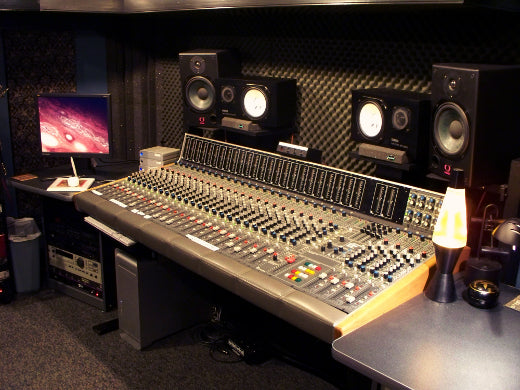Seven Steps to Cleaning Up Your Music Mix
1. Check your volume balancing. Go through each channel and use this process; mute the channel, listen to your mix, then un-mute the channel. If the instrument or vocal seems to jump way out in your mix (too far out), then you need to pull the volume back a little. If the muting didn’t make a difference, then you didn’t have it loud enough. 2. Did you cut before boosting?
This is an easy mistake to make, especially on an analog mixer. What is that old commercial for BASF? Something along the lines of, “We don’t make baseball helmets. We make them better.” It’s better to have the best from the beginning.
Regarding the situation I was in, cleaning up the mix, I thought something with a singer’s vocal didn’t sound right. It was close, but not where I thought it should be. They had a boost in the vocalist’s mid-range. Maybe in the 6K range, I don’t remember. Using the sweeping mid, I moved the sweep frequency way down around the 800 Hz mark and did about a 4dB cut. This really warmed up their vocals and gave their voice a great tone.
The first part of creating a mix should be cutting out the offending frequencies. Once you do that, then you can consider boosting when it’s necessary. Remember, boost wide, cut narrow when you have control over the frequency range with a Q control.
3. Review your gating.
Gating is often used on drum kit microphones to minimize audio bleed – when one kit piece is played but a different kit microphone picks up the sound. Where else could you use gating?
Consider the vocals a place for gating. A vocal microphone near a drum kit could easily pick up the drums. While that would happen when the vocalist is singing, what about when a different vocalist sings lead for a song, like in the case of a pianist who plays and sings. Why let those other sounds into the microphone? Gate the microphone.
4. Hit your high pass filter.
You don’t need low end coming through a lot of your channels, so stop it. I’ll enable the HPF on my vocals and guitars with one exception. If I don’t have a bass guitar on the stage, then I’ll allow an electric guitar to give me some of that low end. In some cases, you can control the point of your high pass filter. I’ve used a high pass filter in the 200 Hz mark on vocals to clean up my bottom end…smooth as a baby’s bottom….ummm…ignore that last part.
2. Did you cut before boosting?
This is an easy mistake to make, especially on an analog mixer. What is that old commercial for BASF? Something along the lines of, “We don’t make baseball helmets. We make them better.” It’s better to have the best from the beginning.
Regarding the situation I was in, cleaning up the mix, I thought something with a singer’s vocal didn’t sound right. It was close, but not where I thought it should be. They had a boost in the vocalist’s mid-range. Maybe in the 6K range, I don’t remember. Using the sweeping mid, I moved the sweep frequency way down around the 800 Hz mark and did about a 4dB cut. This really warmed up their vocals and gave their voice a great tone.
The first part of creating a mix should be cutting out the offending frequencies. Once you do that, then you can consider boosting when it’s necessary. Remember, boost wide, cut narrow when you have control over the frequency range with a Q control.
3. Review your gating.
Gating is often used on drum kit microphones to minimize audio bleed – when one kit piece is played but a different kit microphone picks up the sound. Where else could you use gating?
Consider the vocals a place for gating. A vocal microphone near a drum kit could easily pick up the drums. While that would happen when the vocalist is singing, what about when a different vocalist sings lead for a song, like in the case of a pianist who plays and sings. Why let those other sounds into the microphone? Gate the microphone.
4. Hit your high pass filter.
You don’t need low end coming through a lot of your channels, so stop it. I’ll enable the HPF on my vocals and guitars with one exception. If I don’t have a bass guitar on the stage, then I’ll allow an electric guitar to give me some of that low end. In some cases, you can control the point of your high pass filter. I’ve used a high pass filter in the 200 Hz mark on vocals to clean up my bottom end…smooth as a baby’s bottom….ummm…ignore that last part.
Tip: when altering any setting like boosting, cutting, gating, compression, or a high pass filter, go to the extreme so you hear a clear difference in the sound. Once you know how “extreme” it can sound, then back off the setting until it’s to your liking. Don’t turn a knob or press a button just because you think you should. Let your ears make that call.

The Take Away
The process of cleaning up your mix is best explained with the words of author Antoine de Saint-Exupery,“…he has achieved perfection not when there is nothing left to add, but when there is nothing left to take away.“You aren’t going for perfection in the traditional sense but the idea applies just the same. How do you clean up your mix?


 Used Gear
Used Gear
 Connect
Connect


